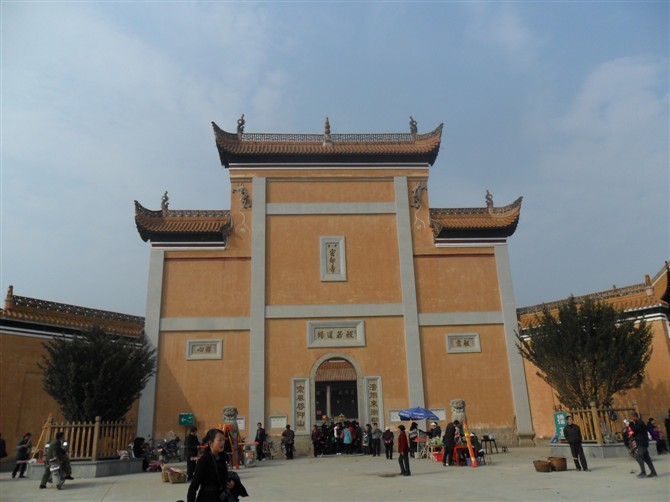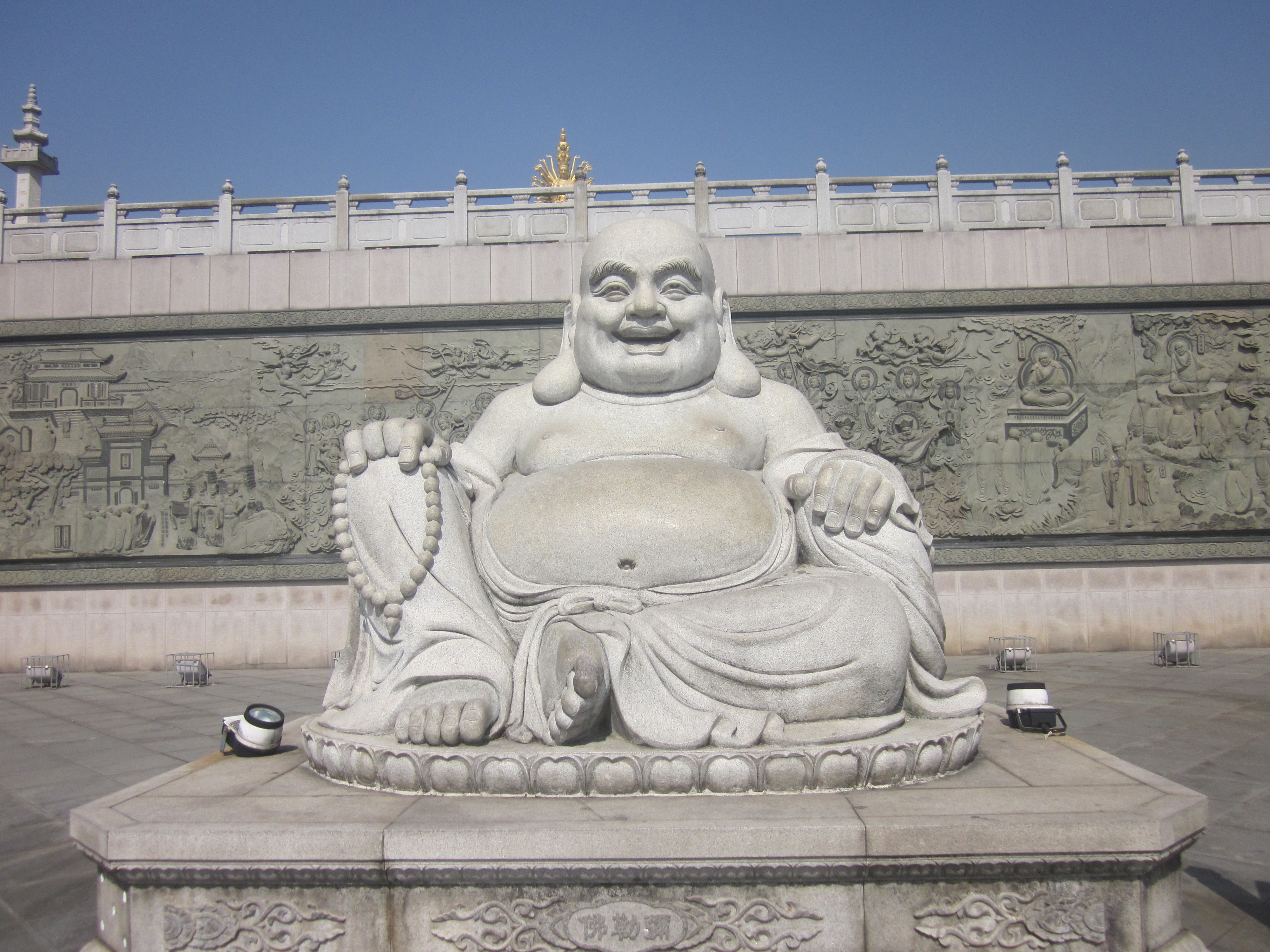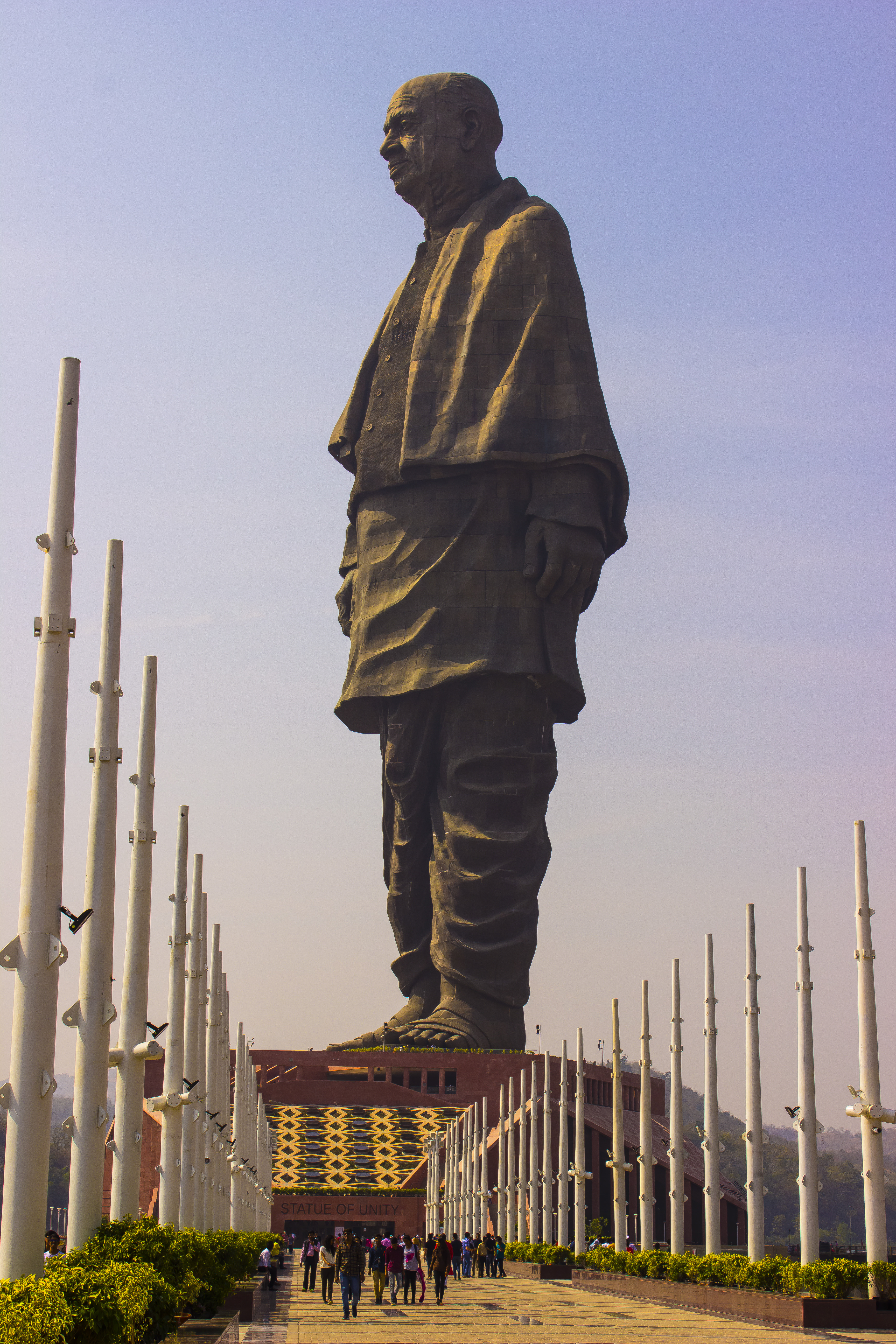|
Guishan Guanyin
The Guishan Guanyin of the Thousand Hands and Eyes is located in Ningxiang, Hunan province, and is the fourth-tallest statue in China, and the sixth-tallest in the world, found at Miyin Temple, a Chan Buddhist temple. It is a gilded bronze monument depicting a manifestation of the Bodhisattva Guanyin known as ''Shiyimian Qianshou Guanyin'' (Traditional Chinese: 十一面千手觀音, Simplified Chinese: 十一面千手观音), meaning the "Eleven-headed Thousand-armed Guanyin", which stands at tall. The Ningshan County Government, with the help of local business and religious organizations, invested 260 million yuan to complete its construction in 2009. See also * Miyin Temple * List of tallest statues This list of tallest statues includes completed statues that are at least tall, which was the assumed height of the Colossus of Rhodes. The height values in this list are measured to the highest part of the human (or animal) figure, but exclude ... References External lin ... [...More Info...] [...Related Items...] OR: [Wikipedia] [Google] [Baidu] |
Weishan Township, Ningxiang
Weishan Township () is a rural township in Ningxiang City, Hunan Province, China. It's surrounded by Dafu Town and Songmutang Town on the northwest, Huangcai Town on the northeast, and Xiangzikou Town on the south. census it had a population of 14,532 and an area of . Administrative division The township is divided into one community and four villages: * Wishan Community () * Tongqing () * Zuta () * Weifeng () * Weishuiyuan (). Geography The Xiaolongtan Reservoir () is located in the township and discharges into the Wei River. Economy The local people grow industrial crops including tobacco, Tea, peach, , tofu, fish, silicon and capsicum annuum, which are important to the local economy. The region abounds with iron. Culture Huaguxi is the most influential form of local theater. Transport The Huangcai-Weishan Road runs east to west from Huangcai Town to Weishan Township. The County Road X107 runs south to north from Xiangzikou Town to Weishan Township, intersecting the ... [...More Info...] [...Related Items...] OR: [Wikipedia] [Google] [Baidu] |
Ningxiang
Ningxiang () is a county-level city and the 2nd most populous county-level division in the Province of Hunan, China; it is under the administration of the prefecture-level city of Changsha. The city is bordered to the north by Heshan District of Yiyang and Taojiang County, to the west by Anhua County and Lianyuan City, to the south by Louxing District of Loudi, Xiangxiang City, Shaoshan City and Yuhu District of Xiangtan, to the east by Yuelu and Wangcheng Districts. Located in the central east of Hunan Province, Ningxiang covers with a registered population of 1,393,528 and a resident population of 1,218,400 (as of 2014). The city has 4 subdistricts, 21 towns and 4 townships under its jurisdiction, its administrative centre is at Yutan Subdistrict ()., , also see: The most famous historic resident was Liu Shaoqi, who lived in Ningxiang from 1898 until 1920, before he went to Beijing as President. The city is famous for its tourism as the home of attractions like He Shuhe ... [...More Info...] [...Related Items...] OR: [Wikipedia] [Google] [Baidu] |
Hunan
Hunan (, ; ) is a landlocked province of the People's Republic of China, part of the South Central China region. Located in the middle reaches of the Yangtze watershed, it borders the province-level divisions of Hubei to the north, Jiangxi to the east, Guangdong and Guangxi to the south, Guizhou to the west and Chongqing to the northwest. Its capital and largest city is Changsha, which also abuts the Xiang River. Hengyang, Zhuzhou, and Yueyang are among its most populous urban cities. With a population of just over 66 million residing in an area of approximately , it is China's 7th most populous province, the fourth most populous among landlocked provinces, the second most populous in South Central China after Guangdong and the most populous province in Central China. It is the largest province in South-Central China and the fourth largest among landlocked provinces and the 10th most extensive province by area. Hunan's nominal GDP was US$ 724 billion (CNY 4.6 trillion) a ... [...More Info...] [...Related Items...] OR: [Wikipedia] [Google] [Baidu] |
Miyin Temple
Miyin Temple () is a Buddhist temple located in Weishan Township, Ningxiang, Hunan, China. The temple is built within grounds of some . The Chinese Buddhist monk Weishan Lingyou of the Tang dynasty (618–907) founded Miyin Temple on and started the Weiyang school of Buddhism making Mount Wei an important religious sacred site in China's feudalist era. History Tang dynasty In 813, in the eighth year of the age of Yuanhe of Emperor Xianzong, the traveler who named Liu Qian () came to Ningxiang, Hunan Province. He saw the Wei Mountain's steep cliffs, lofty peaks, roaring waterfalls, gurgling springs, towering trees and fragrant flowers, and Wei Mountain has seven hills like the Big Dipper. After the tour, Liu Qian came to Baizhang Mountain () in Jiangxi and told his friend Baizhang Huaihai about the natural landscape he had seen. He told Huaihai that there would be a good place to build temples. Huaihai followed Liuqian's advice, he commanded his disciple Weishan Lingyou to ... [...More Info...] [...Related Items...] OR: [Wikipedia] [Google] [Baidu] |
Chan Buddhist
Chan (; of ), from Sanskrit ''dhyāna in Buddhism, dhyāna'' (meaning "meditation" or "meditative state"), is a Chinese school of Mahayana, Mahāyāna Buddhism. It developed in China from the 6th century Common Era, CE onwards, becoming especially popular during the Tang dynasty, Tang and Song dynasty, Song dynasties. Chan is the originating tradition of Zen Buddhism (the Japanese pronunciation of the same Chinese characters, character, which is the most commonly used English name for the school). Chan Buddhism spread from China south to Vietnam as Vietnamese Thiền, Thiền and north to Korea as Korean Seon, Seon, and, in the 13th century, east to Japan as Japanese Zen. History The historical records required for a complete, accurate account of early Chan history no longer exist. Periodisation The history of Chan in China can be divided into several periods. Zen, as we know it today, is the result of a long history, with many changes and contingent factors. Each perio ... [...More Info...] [...Related Items...] OR: [Wikipedia] [Google] [Baidu] |
Guanyin
Guanyin () is a Bodhisattva associated with compassion. She is the East Asian representation of Avalokiteśvara ( sa, अवलोकितेश्वर) and has been adopted by other Eastern religions, including Chinese folk religion. She was first given the appellation of "Goddess of Mercy" or "Mercy Goddess" by Jesuit missionaries in China. Guanyin is short for Guanshiyin, which means " he One WhoPerceives the Sounds of the World." On the 19th day of the sixth lunar month, Guanyin's attainment of Buddhahood is celebrated. Some Buddhists believe that when one of their adherents departs from this world, they are placed by Guanyin in the heart of a lotus, and then sent to the western pure land of Sukhāvatī. Guanyin is often referred to as the "most widely beloved Buddhist Divinity" with miraculous powers to assist all those who pray to her, as is mentioned in the ''Pumen chapter'' of ''Lotus Sutra'' and ''Kāraṇḍavyūha Sūtra''. Several large temples in East Asia ... [...More Info...] [...Related Items...] OR: [Wikipedia] [Google] [Baidu] |
List Of Tallest Statues
This list of tallest statues includes completed statues that are at least tall, which was the assumed height of the Colossus of Rhodes. The height values in this list are measured to the highest part of the human (or animal) figure, but exclude the height of any pedestal (plinth), or other base platform as well as any mast, spire, or other structure that extends higher than the tallest figure in the monument. The definition of for this list is a free-standing sculpture (as opposed to a relief), representing one or more people or animals (real or mythical), in their entirety or partially (such as a bust). Heights stated are those of the statue itself and (separately) the total height of the monument that includes structures the statue is standing on or holding. Monuments that contain statues are included in this list only if the statue fulfills these and the height criteria. Existing statues , - , 92 , Lord Shiva at Sursagar , , Shiva , Vadodara, Gujarat , India , 2002 ... [...More Info...] [...Related Items...] OR: [Wikipedia] [Google] [Baidu] |
2009 Sculptures
9 (nine) is the natural number following and preceding . Evolution of the Arabic digit In the beginning, various Indians wrote a digit 9 similar in shape to the modern closing question mark without the bottom dot. The Kshatrapa, Andhra and Gupta started curving the bottom vertical line coming up with a -look-alike. The Nagari continued the bottom stroke to make a circle and enclose the 3-look-alike, in much the same way that the sign @ encircles a lowercase ''a''. As time went on, the enclosing circle became bigger and its line continued beyond the circle downwards, as the 3-look-alike became smaller. Soon, all that was left of the 3-look-alike was a squiggle. The Arabs simply connected that squiggle to the downward stroke at the middle and subsequent European change was purely cosmetic. While the shape of the glyph for the digit 9 has an ascender in most modern typefaces, in typefaces with text figures the character usually has a descender, as, for example, in . The mod ... [...More Info...] [...Related Items...] OR: [Wikipedia] [Google] [Baidu] |
Bronze Sculptures In China
Bronze is an alloy consisting primarily of copper, commonly with about 12–12.5% tin and often with the addition of other metals (including aluminium, manganese, nickel, or zinc) and sometimes non-metals, such as phosphorus, or metalloids such as arsenic or silicon. These additions produce a range of alloys that may be harder than copper alone, or have other useful properties, such as strength, ductility, or machinability. The archaeological period in which bronze was the hardest metal in widespread use is known as the Bronze Age. The beginning of the Bronze Age in western Eurasia and India is conventionally dated to the mid-4th millennium BCE (~3500 BCE), and to the early 2nd millennium BCE in China; elsewhere it gradually spread across regions. The Bronze Age was followed by the Iron Age starting from about 1300 BCE and reaching most of Eurasia by about 500 BCE, although bronze continued to be much more widely used than it is in modern times. Because historical artworks wer ... [...More Info...] [...Related Items...] OR: [Wikipedia] [Google] [Baidu] |
Cultural Infrastructure Completed In 2009
Culture () is an umbrella term which encompasses the social behavior, institutions, and norms found in human societies, as well as the knowledge, beliefs, arts, laws, customs, capabilities, and habits of the individuals in these groups.Tylor, Edward. (1871). Primitive Culture. Vol 1. New York: J.P. Putnam's Son Culture is often originated from or attributed to a specific region or location. Humans acquire culture through the learning processes of enculturation and socialization, which is shown by the diversity of cultures across societies. A cultural norm codifies acceptable conduct in society; it serves as a guideline for behavior, dress, language, and demeanor in a situation, which serves as a template for expectations in a social group. Accepting only a monoculture in a social group can bear risks, just as a single species can wither in the face of environmental change, for lack of functional responses to the change. Thus in military culture, valor is counted a typical be ... [...More Info...] [...Related Items...] OR: [Wikipedia] [Google] [Baidu] |
Buildings And Structures In Hunan
A building, or edifice, is an enclosed structure with a roof and walls standing more or less permanently in one place, such as a house or factory (although there's also portable buildings). Buildings come in a variety of sizes, shapes, and functions, and have been adapted throughout history for a wide number of factors, from building materials available, to weather conditions, land prices, ground conditions, specific uses, monument, prestige, and aesthetic reasons. To better understand the term ''building'' compare the list of nonbuilding structures. Buildings serve several societal needs – primarily as shelter from weather, security, living space, privacy, to store belongings, and to comfortably live and work. A building as a shelter represents a physical division of the :Human habitats, human habitat (a place of comfort and safety) and the ''outside'' (a place that at times may be harsh and harmful). Ever since the first cave paintings, buildings have also become objects or ... [...More Info...] [...Related Items...] OR: [Wikipedia] [Google] [Baidu] |
Colossal Guanyin Statues
Colossal may refer to: * ''Colossal'' (film), a 2016 science fiction film starring Anne Hathaway * (Colossal) Pictures, entertainment company which closed in 2000 * Colossal (band), American punk band formed in 2001 * "Colossal", a song by Scale the Summit from the album '' The Collective'' * "Colossal", a song by Wolfmother from their debut album ''Wolfmother'' * Colossal (blog), art and visual culture blog * Colossal (chestnut), American chestnut cultivar * Colossal Biosciences, a biotechnology company See also * * * Colossal Connection, former professional wrestling tag team * Colossal Kongs The Colossal Kongs was a professional wrestling tag team who competed in the USWA, GWF and WCW. In WCW they were managed by Harley Race, who brought them to the promotion. The team was made up of Awesome Kong and Krusher Kong (Krusher Kong w ..., former professional wrestling tag team * Colossus (other) {{Disambiguation ... [...More Info...] [...Related Items...] OR: [Wikipedia] [Google] [Baidu] |

_with_human_faces_02.jpg)






